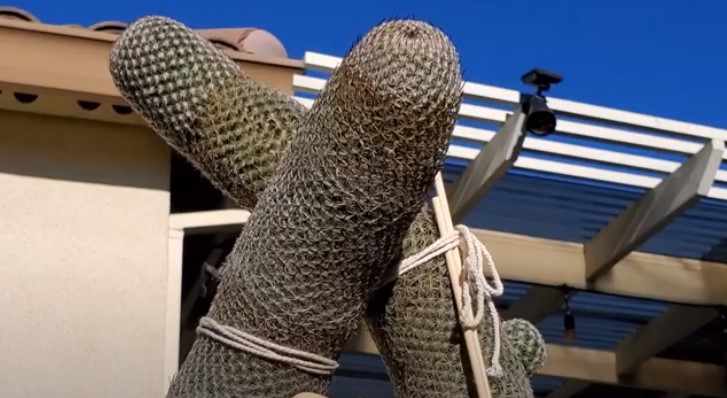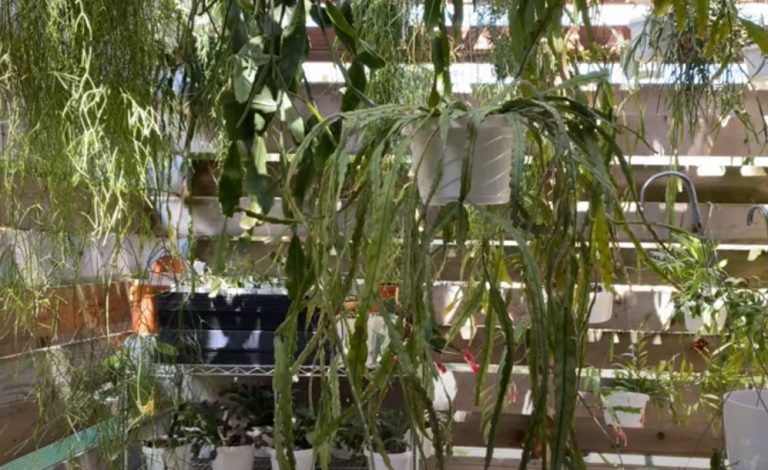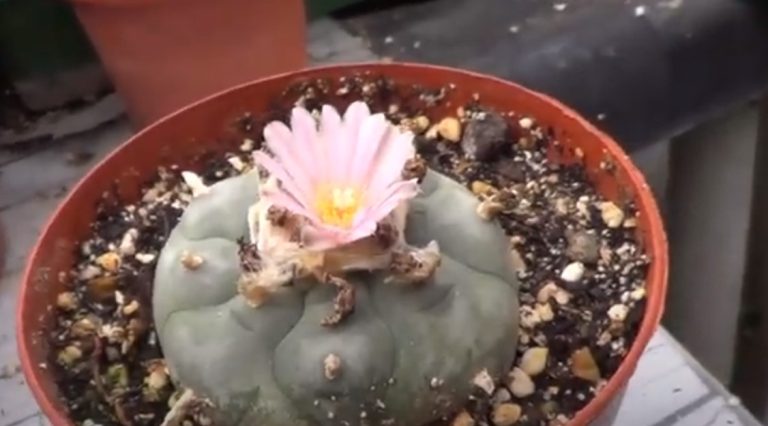Unveiling the Beauty of Mammillaria matudae: A Deep Dive into Nature’s Delicate Wonder

Mammillaria Matudae is a fascinating cactus species belonging to the Mammillaria genus. With its unique physical characteristics and adaptability to arid environments, this cactus has gained popularity among succulent enthusiasts. In this article, we will explore the various aspects of Mammillaria Matudae, including its taxonomy, morphology, ecology, cultivation, and conservation.
An Overview of Mammillaria Matudae
Mammillaria Matudae is a small-sized cactus that typically grows in clumps of cylindrical stems. These stems can reach a height of about (4 to 6) inches (10cm to 15 cm) and have a diameter of approximately 2 to 3 inches (5 to 7.5 cm). The stems are covered in distinctive tubercles that give them a bumpy appearance.
Physical Characteristics of Mammillaria Matudae

The tubercles on the stems of Mammillaria Matudae are arranged in spirals, with each tubercle bearing one or more areoles. These areoles are small, woolly patches from which spines emerge. The spines can vary in color, ranging from white to yellow or brown. Some species even have contrasting spines with dark tips, adding to their visual appeal.
Geographic Distribution and Habitat
Mammillaria Matudae is native to the Chihuahuan Desert, which spans parts of Mexico and the southwestern United States. It grows in rocky areas, arid grasslands, and desert slopes. The cactus is well-adapted to these harsh environments thanks to its ability to store water in its stems and efficiently absorb water through its specialized root system.
Taxonomy and Classification of Mammillaria Matudae
Kingdom, Phylum, and Class of Mammillaria Matudae
Mammillaria Matudae belongs to the Plantae kingdom, the Tracheophytes species, and the Magnoliopsida class. As a member of the Plantae kingdom, it is categorized as a multicellular eukaryote that undergoes photosynthesis, making its food by converting sunlight into energy.
Family and Genus of Mammillaria Matudae
Mammillaria Matudae is a part of the Cactaceae family, which comprises various cactus species. The family belongs to the Mammillaria genus, known for its rounded or cylindrical stem shapes and characteristic tubercles. Mammillaria is one of the largest and most diverse genus within the Cactaceae family and includes many other popular cactus species.
Species Description and Varieties of Mammillaria Matudae
Mammillaria Matudae is a single species within the Mammillaria genus. However, there are several varieties and cultivars of Mammillaria Matudae, each with unique characteristics. These variations can include differences in spine color, length, and arrangement, as well as the size and shape of the tubercles. Some popular varieties of Mammillaria Matudae include “Variegata,” which has variegated stems, and “Cristata,” which has crested growth patterns.
Morphology and Growth Patterns of Mammillaria Matudae

Stem Structure and Size of Mammillaria Matudae

The stems of Mammillaria Matudae are cylindrical and consist of multiple segments. These segments, also known as joints, comprise compacted tissue for water storage. The size of the stems can vary depending on the age and overall health of the plant.
Description of Areoles, Tubercles, and Spines
Areoles are small, woolly patches found on the tubercles of Mammillaria Matudae. From these areoles, spines emerge, providing the cactus with various forms of protection. The spines can be straight or curved, and their length and coloration vary among different varieties. Some spines are long and sturdy, while others are shorter and softer.
Flowering and Reproduction of Mammillaria Matudae

Mammillaria Matudae produces beautiful flowers that bloom from the areoles on the stem. These flowers can be in various colors, including shades of pink, white, and yellow. The flowering typically occurs during spring or summer, and the flowers last several weeks. Mammillaria Matudae relies on pollinators, like bees and butterflies, to move pollen between flowers to reproduce.
Ecology and Adaptations of Mammillaria Matudae
Adaptations to Arid Environments
One of the remarkable features of Mammillaria Matudae is its ability to thrive in arid environments. The cactus has developed several adaptations to cope with limited water availability, such as its specialized root system, allowing efficient water absorption. Additionally, the waxy coating on the stem surface helps reduce water loss through evaporation.
Interactions with Pollinators and Seed Dispersion
Mammillaria Matudae relies on pollinators for its reproduction. Bees, butterflies, and other bugs are attracted to bright and fragrant flowers, and as they visit multiple flowers, they inadvertently transfer pollen, resulting in cross-pollination. Once the flowers are crossbred, they develop into fruit containing seeds that animals, wind, or water can disperse.
Role in the Ecosystem and Conservation Status
Mammillaria Matudae plays a vital role in its ecosystem as part of the web of life. It provides food and shelter for various small animals and insects, creating microhabitats within its vicinity. However, due to habitat loss, overcollection, and climate change, the conservation status of Mammillaria Matudae is of concern. Efforts are being made to protect its natural habitat and promote cultivation to ensure its long-term survival.
Cultivation and Care of Mammillaria Matudae
Optimum Growing Conditions for Mammillaria Matudae
To grow Mammillaria Matudae successfully, using it with the right conditions is important. The cactus thrives in well-draining soil and requires plenty of sunlight. It prefers a dry climate but can tolerate occasional light watering.
Potting, Watering, and Feeding Requirements
When potting Mammillaria Matudae, choose a container with good drainage to prevent soggy roots. Watering should be done sparingly, allowing the soil to dry out between waterings completely. Overwatering can cause root rot and harm to the plant. Feeding can be done with a balanced cactus fertilizer during the growing season.
Common Pests, Diseases, and Troubleshooting Tips
Mammillaria Matudae is generally resistant to pests and diseases. However, it can occasionally be susceptible to mealybugs, scale insects, and fungal infections. To prevent these issues, it is important to check the plant daily for any signals of infestation or disease. If necessary, treat the affected areas with appropriate organic or chemical remedies.
Summary

Summary of Key Points about Mammillaria Matudae
Mammillaria Matudae is a unique cactus species known for its cylindrical stems, distinctive tubercles, and beautiful flowers. It is well-adapted to arid environments and plays a crucial role in its ecosystem. Proper care and cultivation practices can ensure its successful growth and long-term survival.
FAQS
What is the ideal temperature range for Mammillaria Matudae?
Mammillaria Matudae thrives from 70 to 90 degrees Fahrenheit (21 to 32 degrees Celsius). It can tolerate brief periods of higher or lower temperatures, but prolonged exposure to extreme conditions can harm its health.
How often should I water Mammillaria Matudae?
It is recommended to water Mammillaria Matudae sparingly, allowing the soil to dry out completely between waterings. Typically, this translates to watering roughly once every two to three weeks during the growing season and reducing the frequency during the winter dormant period.
Can Mammillaria Matudae be grown indoors?
Yes, Mammillaria Matudae can be grown indoors as long as it is provided with sufficient sunlight. Place keep it near a sunny window or under grow lights to ensure it receives the necessary light requirements. Monitor the indoor humidity levels and adjust watering accordingly.
Are there any special considerations for propagating Mammillaria Matudae?
Mammillaria Matudae can be multiplied by seeds or offsets, which are little plants that grow from the root of the parent plant.
When starting from seeds, it is important to provide the appropriate growing conditions, including a well-draining soil mixture and consistent moisture.
What are potential threats to the survival of Mammillaria Matudae in the wild?
The main threats to the survival of Mammillaria Matudae in the wild include:
- Habitat loss due to urban development.
- Overcollection for the horticultural trade.
- The impacts of climate change.
Conservation efforts are crucial to protect this species and its fragile ecosystem.





